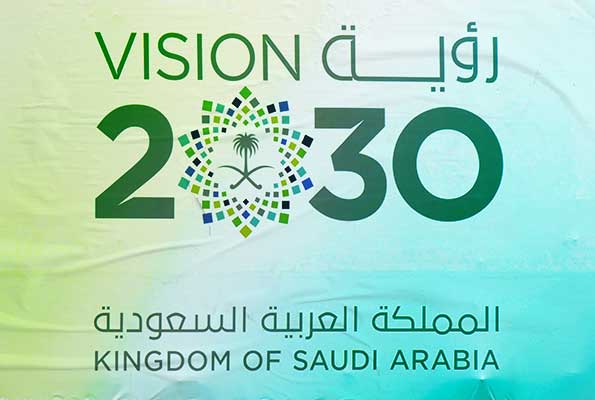A successful Hajj season and year-round Umrah pilgrimages earn Saudi Arabia USD 12 billion. Religious pilgrimages and work are the main reasons people visit the Kingdom.
Visas were hard to secure for such travels, and the kingdom was not a tourist attraction. Instead, Saudi Arabia is a conservative nation criticized for human rights violations.
However, post-pandemic travel is rising, and the monarchy is seeking to boost tourism and transport revenue. It promotes its tourism spots, relaxes entry procedures, and shows a more relaxed side to the globe.
The huge King Salman International will replace Riyadh’s King Khalid Airport, one of its busiest.
As new routes are getting introduced regularly, Saudi’s aviation sector witnessed an 11% growth in the number of flights in the second quarter of 2023 compared to the same period in 2022, according to a report by Cluster 2, a Riyadh-based firm that manages and operates 22 airports around the Kingdom.
The report also indicated that flights in the second quarter of 2023 increased from 30,898 to 34,326 on an annual basis with passengers rising from 3.16 million to 3.7 million, a 17% year-on-year growth.
The report observed that the average daily flights for the second quarter were 377, with an average daily passenger count of 40,759.
This also marks an increase from the figures of 2022 which recorded 340 daily flights with 34,789 passengers, a 7% and 13% growth, respectively.
New routes have been established in the second quarter of 2023, with operations being started on Jazan-Cairo, Al Jowf-Tbilisi, Jazan-Dubai and Al Qassim-Istanbul routes as well as Al Qassim-Trabzon and Al Qassim-Tbilisi sectors.
Fast Quadrupling Capacity
These developments are part of ‘Vision 2030’, Crown Prince Mohammed bin Salman’s (MBS) main project to diversify Saudi Arabia’s economy away from oil.
According to Oxford researcher and consultant Charles Phillips, billions are being spent on ancient sites like Hegra (Madain Salih) and al-Ula, as well as coastal and desert areas, to attract luxury tourists and those interested in exploring lesser-known places.
Phillips told Al Jazeera, “The government is highly committed to the sector’s development – and it knows that with Saudi Arabia’s incredible and diverse landscapes, tourism could be big.”
However, this devout nation banned visiting Nabatean sites like Hegra, which resembled their capital Petra, due to idolatry.
Aziz Alghasian, a fellow at the Arab Gulf States Institute in Washington, added that “so far, the Saudi infrastructure, especially airports, [does] not have the capacity to entertain the amount of traffic Saudi Arabia needs to be a real diversified economy.”
But Saudi Arabia’s plans to construct above King Khalid International, which can handle 25 million people a year, and replace it with the gigantic King Salman International, will allow Riyadh to handle 120 million by 2030.
King Salman International will be smaller than Saudi Arabia’s King Fahad International in Dammam, but it will be among the world’s largest and busiest, adding USD 7.18 billion to the kingdom’s non-oil GDP.
“[The airport is] one of several projects designed to propel the country into rapidly globalizing markets,” said Riyadh’s King Faisal Centre for Research and Islamic Studies senior fellow Joseph A. Kechichian.
“For a country that has long been seen as a closed-off society and unknown destination, expanding connectivity with the rest of the world and increasing the ability to bring people to Saudi Arabia will be very important,” Phillips said.
Regional Competition
King Salman International aims to surpass Qatar’s Hamad International and Dubai International, the GCC’s busiest airports.
Alghashian said many flights must cross Saudi airspace to reach Doha and Dubai.
The crown prince is creating opportunities because Saudi cities were never hubs because they lacked infrastructure and opportunities.
Qatar, the UAE, Bahrain, and Oman have built top-tier airports for Qatar Airways, Emirates Airlines, Etihad, Gulf Air, and Oman Air.
Qatar, Abu Dhabi, and Dubai have benefited from being international travel hubs, with their carriers achieving global aviation renown.
The kingdom stated earlier in 2023 that it would start a second national airline, Riyadh Air, based at King Salman International and led by the former CEO of Etihad.
King Salman International and Riyadh Air may give Saudi Arabia the same advantages as its smaller neighbours. Kechichian noted that the kingdom’s higher population and size would “chiefly accommodate the burgeoning population and, secondarily, all the expected tourists” rather than transit traffic.
The Saudi Press Agency claims that renewable energy would power the new airport’s amenities, which officials say are green.
John Calabrese, director of the Middle East-Asia Project at the Middle East Institute, told Al Jazeera that this massive project “ticks all the boxes” in the kingdom’s efforts to diversify the economy, contribute to a ‘green future’, and increase employment opportunities for the country’s growing youth population.
“It can also serve to complement and support other sectors. Presumably, the new airport will have a large cargo capacity, which would support the kingdom’s goal of localizing production, some of which could be exported via air cargo,” Calabrese said.
The Saudis are ambitious, expecting to open the airport in seven years with all the associated costs.
Calabrese warns, “While the successful execution of the airport project might succeed in carving a slice out of their neighbours’ market share, it could trigger a race to the bottom in terms of pricing and profitability.”
How these mega-investments will affect Saudi Arabia’s non-oil income is unknown.



